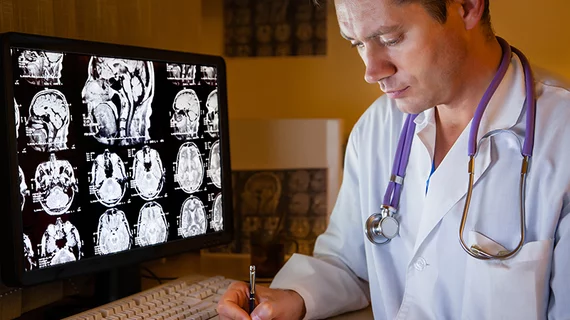CDC analysis finds imaging reports important in physician data exchange
A new analysis from the Centers for Disease Control and Prevention (CDC) found imaging reports among the top three pieces of patient data physicians electronically received and integrated in 2015.
Using data from the 2015 National Electronic Health Records Survey, the CDC examined the types of patient health information (PHI) that are electronically sent, received, integrated and searched for by office-based physicians with an electronic health record (EHR) system in the United States.
Here are the results:
Physician-sent personal health information
The most common type of data were referrals (67.9 percent), lab results (67.2 percent) and medication lists (65.1 percent).
The three least common were summary care records (51.5 percent), registry data (55.9 percent) and imaging reports (56.6 percent).
Physician-received data
Laboratory results were the most commonly received at 78.8 percent, followed by imaging reports (60.8 percent) and medication lists (54.4 percent).
At the bottom of the list were emergency department notifications (34.5 percent), hospital discharge summaries (42.5 percent) and registry data (43.2 percent).
Electronically integrated patient health data
Laboratory results again topped the list at (73.2 percent), followed by imaging reports (49.8 percent) and hospital discharge summaries (48.7 percent).
The least commonly observed integrated data were registry data (30.9 percent), problem lists (32.7 percent) and medication allergy lists (36.1 percent).
Physician data searches
Office-based physicians most commonly searched the EHR for medication lists (90.2 percent), medication allergy lists (88.2 percent) and hospital discharge summaries (80.4 percent).
Imaging reports (58.9 percent), lab results (48.5 percent) and problem lists (41.2 percent) were the next most-searched pieces of data.
This is the first national estimate of PHI type based on specific interoperability segments from the Office of the National Coordinator, authors noted, and an important step for future studies.
“These estimates can potentially be used as a benchmark for future studies,” wrote Ninee S. Yang, PhD, and colleagues. “Combined with measures of electronic sharing of PHI by physicians, information on the specific type of PHI shared electronically among office-based physicians will assist in tracking progress outlined in the federal plan for achieving interoperability.”

